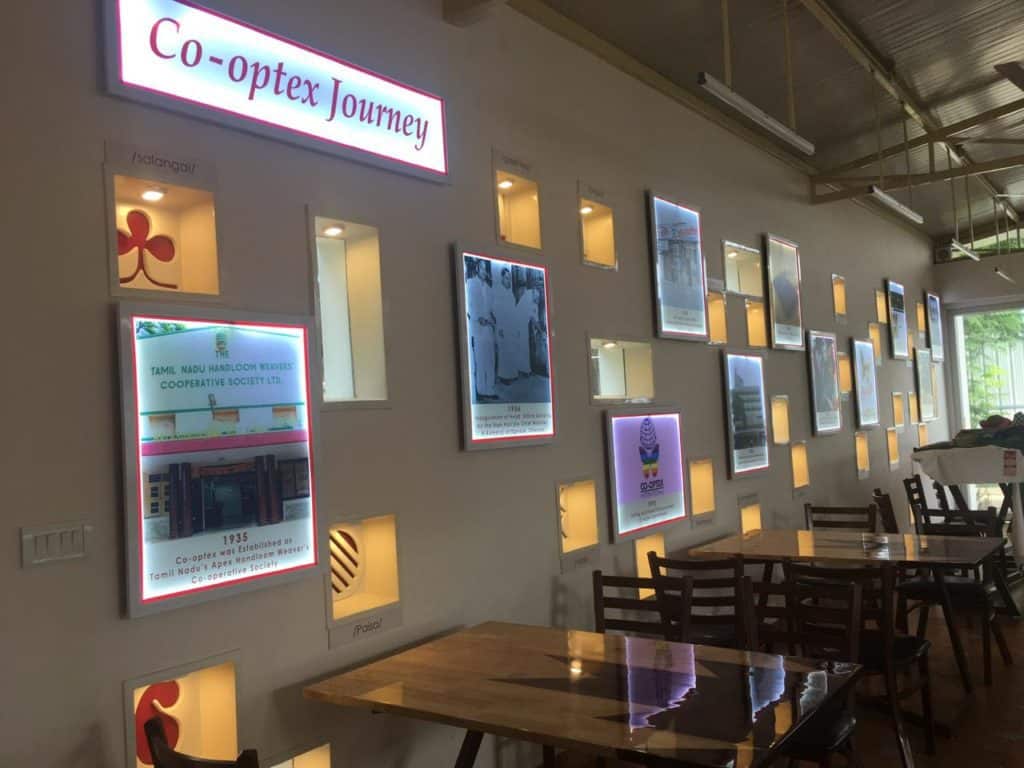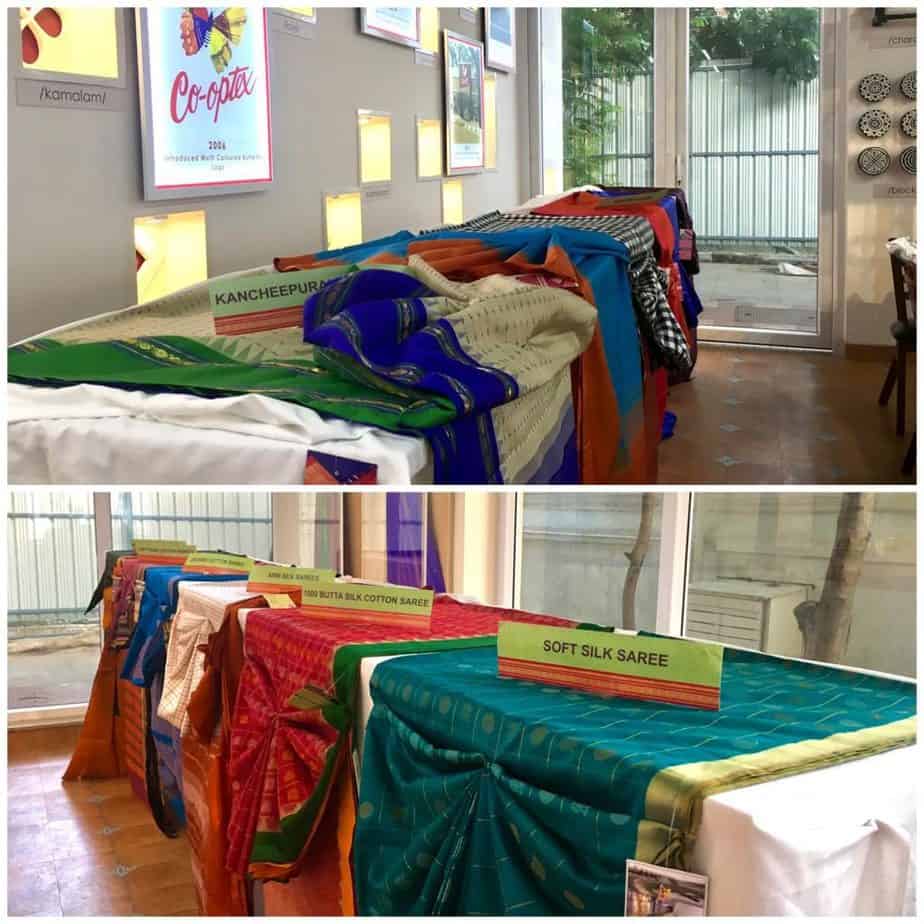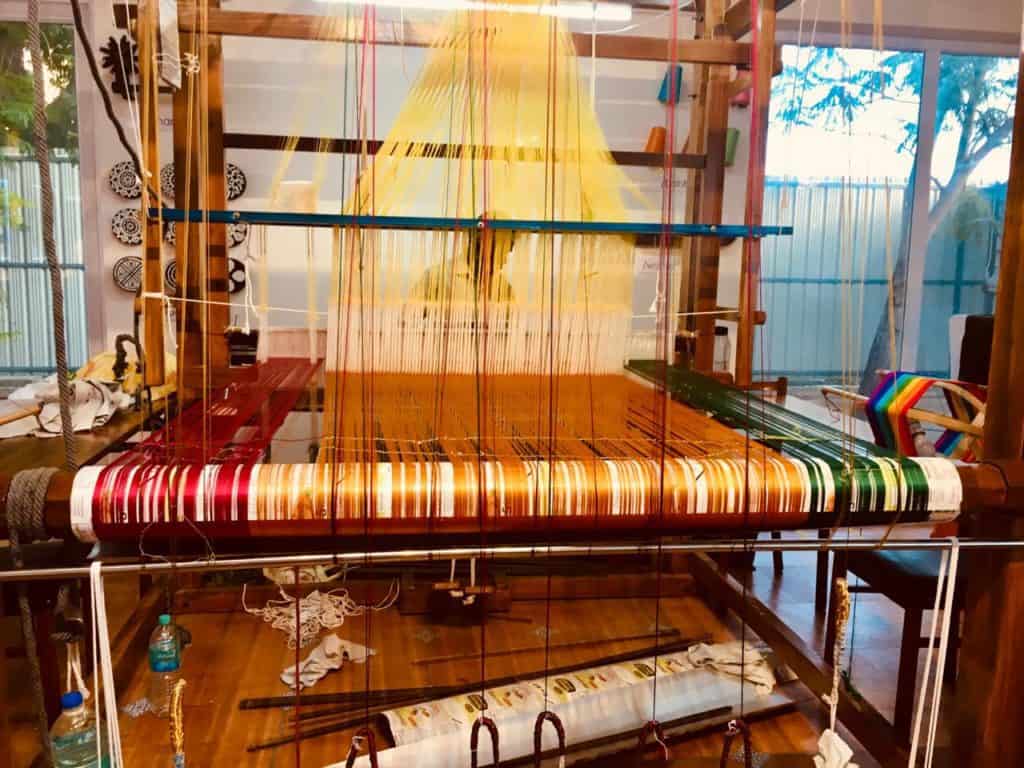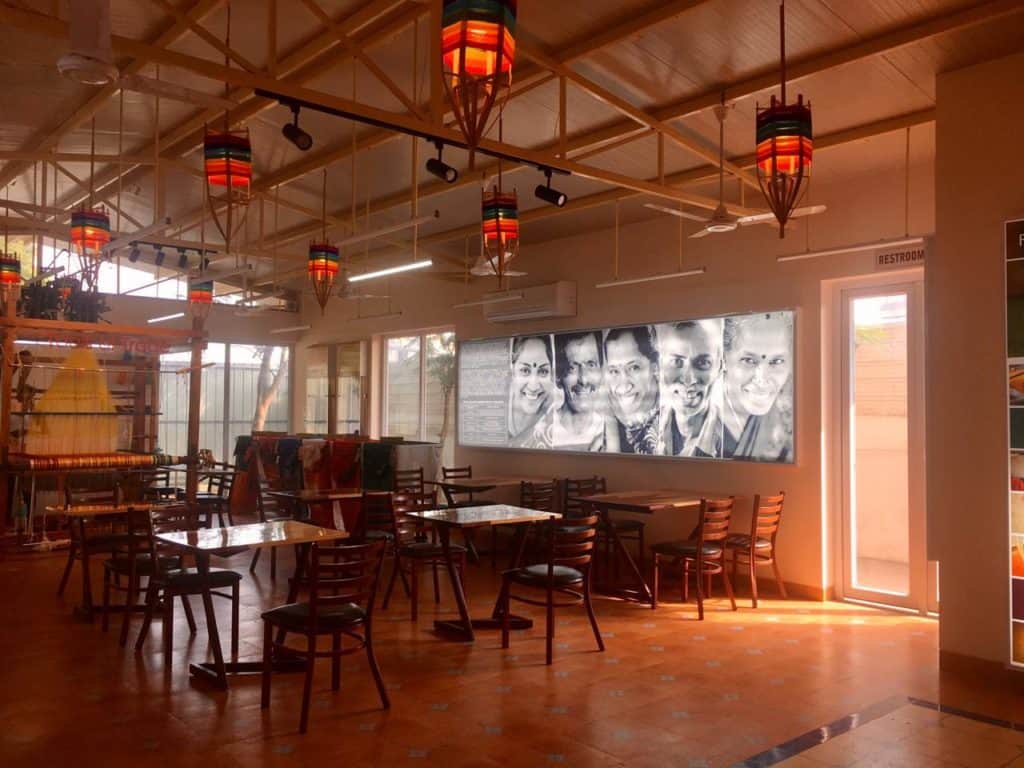Tamil Nadu Handloom Weavers’ Co-operative Society, popularly known as Co-optex, evokes a nostalgic feeling among Chennaites. A saree passed down generations or a bedsheet that has been in a family for over 30 years are common memories attached to the brand. Since its inception in 1935, people’s trust in Co-optex has never wavered and it continues to serve its loyal customers. However, after the 1990s, the brand started losing relevance and became less and less popular with the younger demographic.
In 2004-05, after Co-optex recorded a loss of Rs 85 crore, the management scripted a turnaround that brought the brand back to life. The last decade defined Co-optex’s revival success story. The brand reinvented itself by catering to the needs of its young customer base. Despite maintaining the traditional core, Co-optex’s saree designs became suave and contemporary.
TN Venkatesh, managing director of Co-optex, has been instrumental in this journey. He understands Co-optex’s value system and its 85-year-old legacy. “We had a customer the other day who wanted to recreate a saree she bought in 1980, for her granddaughter. That is the kind of personal attachment people share with Co-optex,” he says.
Since Venkatesh assumed the role of managing director in 2014, the showrooms and shopping experience at Co-optex has gone through significant changes. Showrooms were modernised. Everything, including the interiors and display shelves to the store windows, underwent a makeover to make shopping at the stores an interesting and exciting experience.
“It was very important to create a good ambience, which functioned similarly to that of a boutique. After I joined, 55 of the 159 showrooms in India were modernised,” he explains.
After the dip in sales and profits, the Co-optex management realised that it needs to understand and deliver as per the expectations of young customers to attract them. In 2015, Co-optex launched a state-wide consumer preference survey and reached out to respondents in their 20s and 30s who were working in FMCG companies, IT companies and were college students, to gauge their taste and assess how the market has evolved over time.
This led them to diversify their product range and introduce kurtis, scarves and stoles in the stores. “I wanted to make sure Co-optex is known for more than just sarees and bedsheets, and offer products that can be used by everyone, especially the younger customers,” says Venkatesh.

Beyond borders
Co-optex is revered and celebrated not only in India but also in countries with a significant Tamil population. The brand has a strong presence in the UAE, Singapore, Malaysia and other Southeast Asian nations.
Launched in 2014, Co-optex’s e-commerce website tremendously helped the brand to boost sales and created an avenue for NRIs to reconnect with their Tamil roots. Co-optex held events showcasing a wide range of sarees, quilts and other textiles at many international venues.
In 2019, the cooperative recorded sales of Rs 1.6 crore through the e-commerce website alone. “These international events helped us achieve a strong international presence. We had plans to go to the US as well but due to Corona (pandemic), we had to shelve our plans,” adds Venkatesh.
Moving with the times
In its growth journey, Co-optex not only retained its signature designs and the aesthetic quality of its sarees but also introduced new lines of sarees with contemporary values. Its Ahimsa silk and organic cotton saree ranges make sustainable fashion a reality.
As the name suggests, Ahimsa silk is produced in a natural way, without harming silkworms.
Instead of dumping the cocoons in boiling water to obtain silk threads, it is allowed to hatch naturally, thus sparing the silkworms. Similarly, Co-optex’s organic cotton sarees are made with cotton that is grown without using fertilisers. These sarees offer a suitable alternative to customers who are conscious of their fashion choices.
Striking a cultural chord, every now and then Co-optex launches special collections to celebrate icons of Chennai. Launched in 2015, its MS blue collection paid tribute to the legendary singer MS Subbulakshmi by recreating sarees with real zari in the shade of blue that was popular during her prime. In 2017, Co-optex’s Rukmini Devi (Arundale) collection honoured the doyen of Bharatnatyam and founder of Kalakshetra, by reviving silk saree designs from her time.
Weavers of Co-optex
K Dayalan and T Kannivel are second-generation weavers from Kancheepuram district. “Weaving is all we know and we have been making sarees for Co-optex for more than 40 years,” says Dayalan. Co-optex has strived not only to highlight the rich heritage of Tamil Nadu handlooms, but has also advocated for the state’s weavers and their contribution to the legacy.
Sarees from Co-optex have a weaver identification card attached to them. The card has the name of the weaver, the region where it was produced, the weaver’s photograph and the number of hours that has gone into making the saree. With these details every customer can understand the amount of work that goes into weaving a saree. Through this unique initiative, weavers are recognised for their craftsmanship and their artistic brilliance.

“We do not have the assurity of prompt wages if we work for a private master weaver. He will pay us for the first few sarees and keep deferring payments after the fifth or sixth saree. But Co-optex remits our wages into our accounts after each saree is weaved. We do not have to worry,” explains Kannivel.
The pandemic has affected the handloom and textile industry severely, with the earnings of weavers across India dwindling. Co-optex, however, supported its weavers throughout this period with up-to-date wages and compensation. “COVID has caused a huge slump in the market, but we have paid our weavers the same wages throughout these last few months like we did in January 2019 and intend to continue (the same way),” says Venkatesh.
The Handloom Cafe, a unique landmark
The Handloom Cafe is a recent addition to the long string of accomplishments by Co-optex. The cafe, inaugurated on August 7th (the National Handloom Day) this year, is in the same premises as the Co-optex showroom in Egmore. “The cafe was originally meant to open this March but got pushed due to the pandemic, so we decided to commemorate the National Handloom day by inaugurating the cafe on August 7th,” says Venkatesh.


The cafe pays homage to every aspect of Tamil Nadu handlooms and its weavers. As you enter the cafe, you are greeted by the rich aroma of filter coffee along with a colourful display of sarees. Motifs, in the shapes of salangai (musical anklets worn by dancers), mangai (mango) and kamalam (lotus), that are usually seen only on sarees are engraved on the cafe’s walls. The ceiling lamps are made with colourful parivattams (traditional turbans). The Handloom Cafe entices and seamlessly lures you into the world of handlooms as you indulge in their delicious sundal, a snack made of chickpeas.
At the back of the cafe, you can see two weavers from Kancheepuram weaving a striking silk saree on a handloom. The sound of every pedal of the handloom is a lesson learnt about the amount of work and time that goes into making a saree. Sipping the coffee and leisurely walking around, you discover the rich journey of Co-optex along with the handloom clusters of Tamil Nadu neatly displayed on a map. The tables with temple designs are aptly arranged on either side of the handloom for the visitors to enjoy the art of weaving.

The Handloom Cafe is a part of Co-optex’s innovative marketing strategy. The idea behind the cafe is to attract the younger generation to the traditional textile art of handloom sarees. “There are many colleges in this vicinity, so we thought this cafe would make a good place to hang out for the youngsters and they can also learn about the heritage of Tamil Nadu and its various weaving communities,” adds Venkatesh.
I love reading stories of struggle ,fight back and resurrection,having grown up seeing movies and seeing the protagonist win.The story of Co optex was close to my heart and brought to me memories of shopping during the discount season with my mother. As the author states sarees and bedspreads of earlier years are treasured possessions even now
True, that! Coop text is synonymous with Tamil
Nadu.
T N Venkatesh, IAS, has done a fabulous job of reinventing Cooptex and has made shopping there a pleasurable experience.
Very informative and well published article
Article on co optex rekindled my memories
i remember accompanying my father for purchase of Chennimalai bedsheets and good quality towels
Even for my marriage i got some really beautiful sarees which was appreciated by all
Now as a senior citizen these are nostalgic memories
My best wishes to cooptex family
Enjoyed reading the well researched article of the traditional cooptex
I remember that my mother and grand mother used to buy
Waters in cooptex only and also all our bed room linens.
Good job being done by Mr. Venkatesh. Especially paying regularly the weavers during this Covid period is very much applaudable. Worth sharing with the “younger demographic” as you have nicely put Aishwarya. We very much loved this article which took me back to my younger days memory of cooptex purchases especially during Deepavali times. High time , we will shift to cooptex, thanks to your beautiful article
Good job and best wishes.
Wonderfully written article regarding Cooptex. I am a ardent fan of this brand for the quality and designs of the products. My favorite show room used to be the one in Luz corner.
They used to festival offers and special discounts to Govt. Employees.
Very glad that enormous steps have been taken to improve the lot of weavers and the traditional industry. It really needs support and lot of awareness among the younger generation to procre their requirements from Cooptex.
I particularly like the idea of the Ahimsa Silk and the Handloom Cafe.
I am waiting for the situation to improve to visit a Cooptex showroom.
All the best to the weavers and the handloom industry.